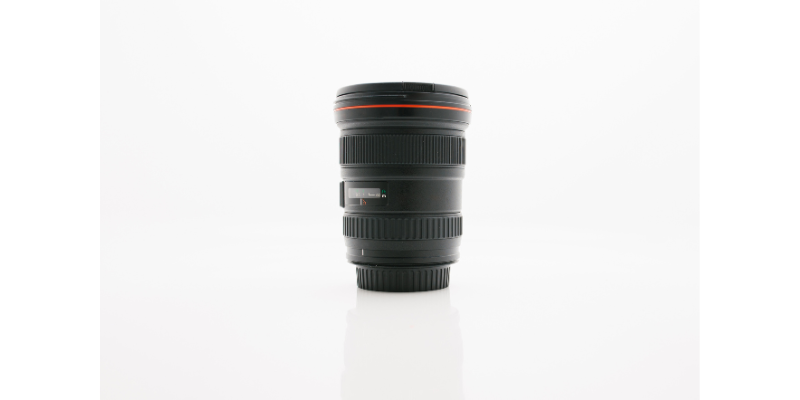Choosing the right lens is one of the most important decisions a photographer can make. While cameras provide the base for capturing an image, it’s the lens that largely defines how that image looks — from sharpness and depth of field to field of view and compression.
In this guide, you’ll learn how to select the right lens based on your style of photography, whether you’re into portraits, landscapes, street photography, macro, or video content.
Understanding Lens Basics
Before jumping into types of lenses, let’s understand a few technical terms you’ll encounter:
- Focal Length (mm): This determines how zoomed in or wide your lens is. Lower numbers (e.g. 16mm) mean wider angles; higher numbers (e.g. 200mm) are more zoomed in.
- Aperture (f/stop): A lower number like f/1.8 means more light and blurrier backgrounds. Higher numbers like f/11 let in less light and keep more of the scene in focus.
- Prime Lens: Has a fixed focal length (e.g. 50mm). Known for better image quality and larger apertures.
- Zoom Lens: Offers variable focal lengths (e.g. 24-70mm). More flexible for varying distances.
Best Lenses for Different Photography Styles
📸 1. Portrait Photography
Goal: Soft backgrounds, flattering perspective, and sharp focus on the subject.
Recommended Lenses:
- 50mm f/1.8 – Known as the “nifty fifty”, affordable and great for beginners.
- 85mm f/1.8 or f/1.4 – Offers compression that flatters facial features.
- 70-200mm f/2.8 – Perfect for capturing portraits from a distance with beautiful bokeh.
Why: These lenses allow for a shallow depth of field and natural subject isolation.
🌄 2. Landscape Photography
Goal: Sharp images from foreground to background, wide field of view.
Recommended Lenses:
- 16-35mm f/4 or f/2.8 – Wide-angle zoom for capturing vast scenes.
- 20mm or 24mm prime – Lightweight and sharp with minimal distortion.
- Tilt-shift lenses (for advanced users) – Correct perspective and enhance sharpness across the frame.
Why: Wide-angle lenses allow you to capture the full scale of nature or architecture.
🏙️ 3. Street Photography
Goal: Discretion, speed, and the ability to capture candid moments.
Recommended Lenses:
- 35mm f/1.8 or f/2 – Classic focal length for storytelling; wide but not too wide.
- 50mm f/1.8 – Also popular, offers natural-looking images.
- 24-70mm f/2.8 – For those who want zoom flexibility.
Why: Fast primes let you shoot in low light and stay discreet, which is key on the streets.
🐜 4. Macro Photography
Goal: Extreme close-ups with high detail.
Recommended Lenses:
- 100mm f/2.8 Macro – Excellent for flowers, insects, and product shots.
- 60mm f/2.8 Macro – A more compact version for smaller setups.
- Extension tubes – Budget-friendly way to turn regular lenses into macro.
Why: True macro lenses can focus extremely close while maintaining clarity.
🐦 5. Wildlife and Sports Photography
Goal: Capture fast-moving subjects from a distance with clarity.
Recommended Lenses:
- 100-400mm f/4.5-5.6 – Versatile zoom with long reach.
- 300mm or 400mm prime – Ideal for serious wildlife photographers.
- 70-200mm f/2.8 – Excellent for sports and action with fast autofocus.
Why: These lenses help you get close without physically approaching your subject — critical for safety and discretion.
🎬 6. Video and Vlogging
Goal: Smooth autofocus, wide angles, good low-light performance.
Recommended Lenses:
- 16-35mm f/2.8 – Great wide-angle zoom for dynamic shots.
- 24mm f/1.4 – Sharp and fast prime for cinematic shots.
- Sigma 18-50mm f/2.8 (APS-C) – Lightweight and perfect for handheld vlogging.
Why: Silent autofocus and wide apertures are key for high-quality, cinematic video.
Consider Crop Factor
If you’re using an APS-C camera (like most entry-level models), the crop factor affects focal length:
- APS-C crop factor ≈ 1.5x (Nikon, Sony) or 1.6x (Canon)
- A 50mm lens on an APS-C body behaves like a 75mm/80mm lens
This is important when choosing lenses for things like portraits or landscapes.
Key Tips for Choosing the Right Lens
✅ Try Before You Buy
If possible, rent or borrow a lens before purchasing. Sometimes a lens sounds perfect on paper but may not suit your shooting style.
✅ Don’t Chase the Most Expensive
A more expensive lens doesn’t automatically make you a better photographer. Focus on lenses that suit your creative goals and real usage.
✅ Match Your Lens to Your Intent
Are you traveling? Shooting in low light? Photographing fast action? Your lens should solve a problem or improve your storytelling.
✅ Consider Weight and Size
If you shoot on the go or travel often, a small, light lens might be more valuable than a large, heavy pro lens.
Final Thoughts: Your Lens is Your Vision
Your lens shapes how you see the world — it’s more than a tool; it’s a creative partner. Understanding what each lens offers empowers you to make better choices and capture more meaningful, technically strong images.
As you grow as a photographer, your lens collection might grow too — but even one well-chosen lens can open up endless creative opportunities.
